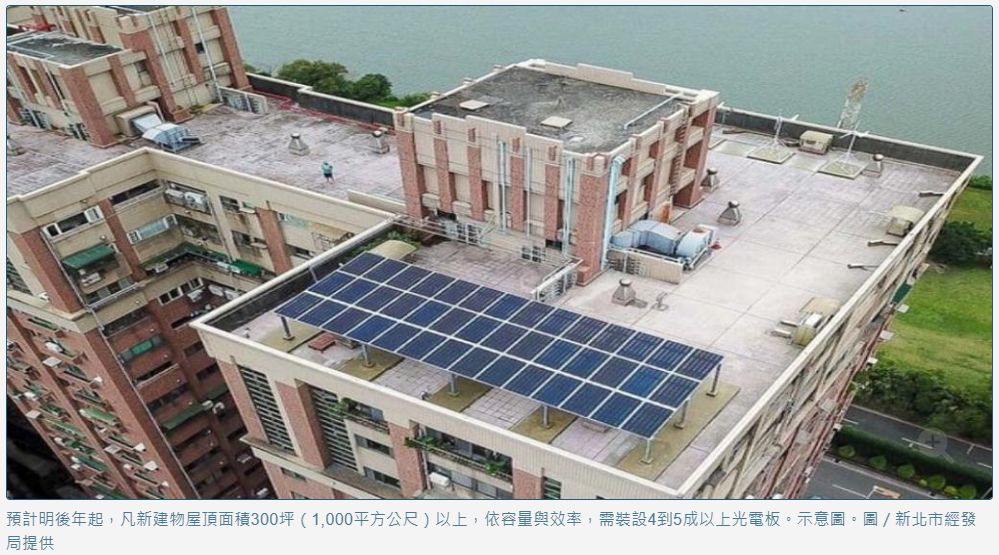
[China Times, Wang Yushu] Initial Decision Made! The government has approved a law amendment in mid-year, mandating that future new and renovated building rooftops must install solar panels. The Ministry of Economic Affairs recently finalized the thresholds and proportions in a subsidiary law. Starting from next year or the year after, all new buildings with a roof area of 300 ping (approximately 1,000 square meters) or more will be required to install solar panels covering 40% to 50% of the roof area, depending on capacity and efficiency. Estimates suggest that large residential complexes, commercial offices, and factories will all be subject to this mandatory installation.
To maximize space for solar installations, the Legislative Yuan passed an amendment to the Renewable Energy Development Act in May, requiring that future new, expanded, or renovated buildings of a “certain scale” must include solar panels covering a “certain proportion” of their roof area. The exact scale and installation proportions will be determined by the subsidiary law.
After about six months of discussion, the Bureau of Energy under the Ministry of Economic Affairs has preliminarily completed the draft of the subsidiary law, setting the threshold for mandatory installation at a roof area of 1,000 square meters (300 ping) or more. For every 20 square meters (6 ping), 1 kW of solar panels must be installed, meaning a 300-ping roof would need to have a capacity of 50 kW.
An official from the Bureau of Energy explained that based on the varying efficiency of solar panels, covering 40% to 50% of a 300-ping roof would be necessary. If developers use high-efficiency panels, the coverage could be reduced to 40%; otherwise, it may need to cover up to half the roof.
According to this threshold, large residential complexes, commercial offices, and factories are expected to be included, while detached houses and smaller buildings would not be regulated. The subsidiary law will be released by the end of the year, with a grace period provided, and implementation possibly starting next year or the year after.
Additionally, the Bureau of Energy has granted “exemptions” for three categories. First, if a building has “poor sunlight conditions,” developers can apply for an exemption when applying for a construction permit, subject to approval by the competent authority. Second, “memorial and special buildings,” such as museums, religious establishments, and sports arenas, are exempt. Finally, if “the competent authority grants approval for exemption,” such as in the case of military facilities where confidentiality is a concern, the Ministry of National Defense can grant an exemption. The official noted that this is a flexible mechanism and has not yet been finalized.
Currently, the cost of installing solar panels is about NT$60,000 per kW, so the cost for 50 kW would be around NT$3 million. However, the official emphasized that this cost applies to existing buildings; incorporating solar panels into the design of new buildings from the start would be cheaper, saving time, labor, and money.
Once the solar panels are installed, the electricity generated can be sold to Taipower for 20 years at around NT$4.5 per kilowatt-hour, with an average payback period of 9 years. The official mentioned that although developers may pass the cost on to the property price, in the medium to long term, the income from selling electricity will exceed the initial cost, allowing the community to recoup its investment and even profit, reducing the management fees for property owners.
This article was translated from: Mirror Media.
